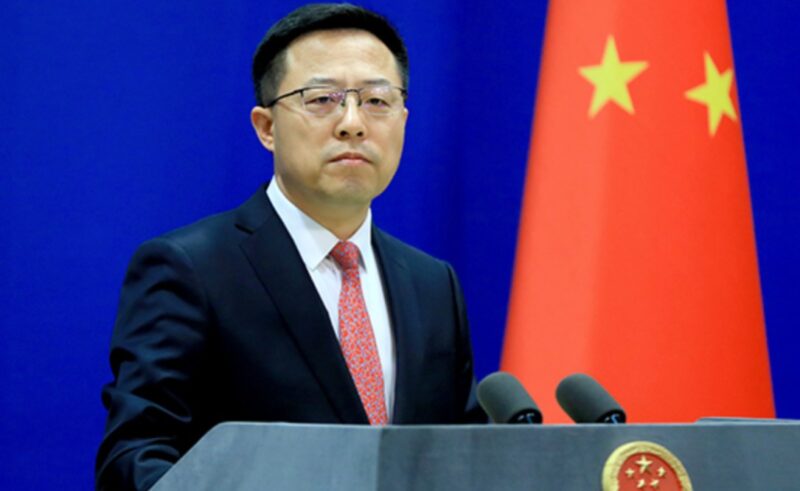Hambantota, Sri Lanka: an airport without planes, a rotating restaurant without guests, a sea port in charge of debt – the economic crisis of Sri Lanka has been exacerbated by projects funded by Chinese which present themselves as neglected monuments to the extravagance of the extravagance of the extravagance of the extravagance of government.The nation of the southern Asian island borrowed massively to connect years of budgetary deficits and commercial deficits, but wasted enormous sums on unaccompanied infrastructure projects that have more drained.
He is now in the grip of his worst financial crisis since the independence of Great Britain in 1948, with months of Panus breakdowns and acute shortages of food and fuel that afflict its 22 million people.After weeks of largely peaceful demonstrations demanding that the government resign from its economic mismanagement, things became violent on Monday after pro-government supporters clashed with demonstrators, killing five and at least 225 injured.
Many white elephant projects that have contributed to fueling the crisis now gathering dust in the Hambantota district, which houses the powerful Rajapaka clan, which has used its political influence and billions of Chinese loans in a failed effort to transform the ‘Rural outpost in a major economic center.
Prime Minister Mahinda Rajapaksa – who commanded many projects – announced his resignation on Monday, the same day that anti -government demonstrations became violent.But his younger brother Gotabaya remains president.The centerpiece of the Drive infrastructure was a deep sea port on the most frequented East-West shipping route in the world, which was to stimulate industrial activity.Instead, he has hemorragling money from the start of operations.
“We were very expected when the projects were announced, and this region improved,” Dinuka, a longtime resident of Hambantota, told AFP.”But now that doesn’t mean anything. This port is not ours and we have trouble living.”The port of Hambantota was unable to serve $ 1.4 billion in Chinese loans to finance its construction, losing $ 300 million in six years.
In 2017, a Chinese state company received a 99 -year -old lease for the sea port – an agreement that aroused concerns in the region that Beijing had obtained a strategic toe in the Indian Ocean.Overlooking the port is another extravagance sustained in China: a conference center of $ 15.5 million which has been largely unused since its opening.Nearby is Rajapaksa airport, built with a loan of $ 200 million from China, which is so sparingly at one point, it could not cover its electricity bill.
In Colombo capital, there is the Port Funding port project funded by China – an artificial island of 665 acres set up in order to become a financial center competing with Dubai.But the criticisms have already struck the project becoming a “hidden debt trapChina is the largest bilateral lender in the government and has at least 10% of its $ 51 billion debt.But analysts believe that the actual number is considerably higher if loans to public enterprises and the central bank of Sri Lanka are taken into account.
The loan contributed to the disastrous tax situation of Sri Lanka, after years of loans to cover the budgetary deficits in a spiral and finance the imported products necessary to maintain the economy of the island.”Tax debauchery for many decades and weak governance … caused us trouble,” Murtaza Jafferjee, president of the Sri Lanka Institute of Advocata told AFP.
Economic misfortunes have weighed heavily after the coronavirus pandemic torpedoes vital income for tourism and funding, leaving the country dependent on the importation unable to buy essential goods abroad.Unable to serve his increasing debt burden and, with the credit rating, the downgrades of costs of fresh loan on the international monetary market, the Government of Sri Lanka announced a defect in its foreign loan obligations last month.He had sought to renegotiate his reimbursement calendar with China, but Beijing rather offered more bilateral loans to reimburse existing loans.
This proposal was scuttled by Sri Lanka’s appeal for helping the International Monetary Fund – a decision that has aroused dismay, because Chinese lenders will now have to have a haircut on their loans.
“China did its best to help Sri Lanka not to be lacking, but unfortunately, they went to the IMF and decided to be lacking,” Chinese ambassador Qi Zhenhong said last month.For many Sri Lankans, largely unused infrastructure projects have become powerful symbols of mismanagement of the Rajapaksa clan.”We are already deep in the loans,” said Krishantha Kulatunga, owner of a small stationery store in Colombo.
Kulatunga’s activities are near the entrance to the Lotus tower, a skyscraper in floral shape funded by Chinese funds.The colored glass facade of the tower dominates the horizon of the capital, but its interior – and a renewable restaurant planned with a panoramic view of the city – has never been opened to the public.What is the point of being proud of this tower if we are left to food?” asked Kulatunga.

